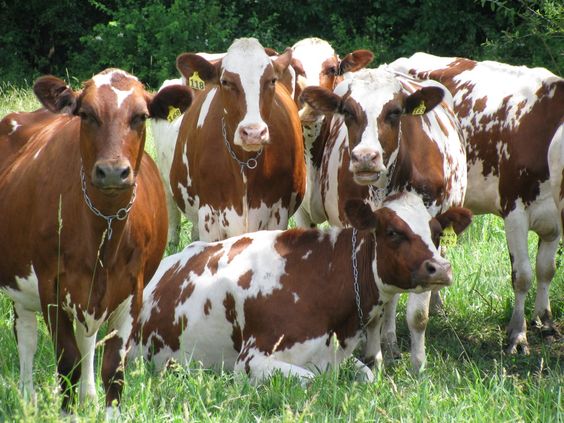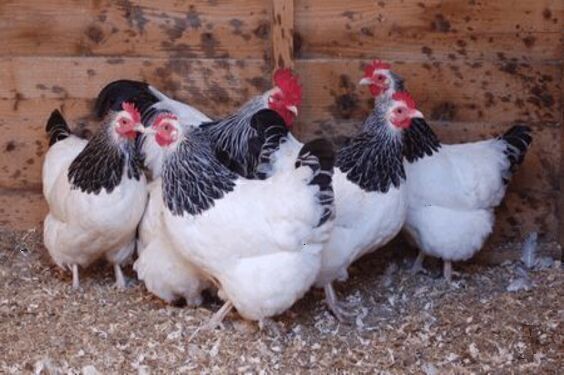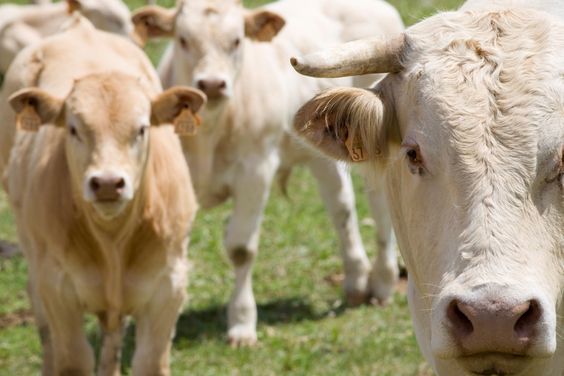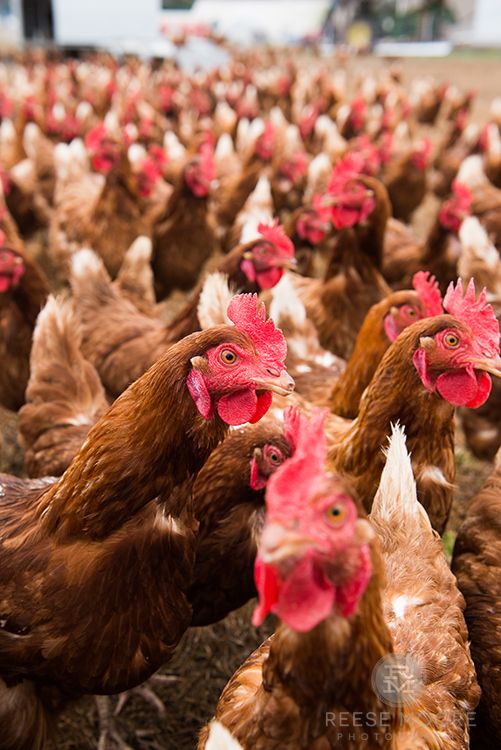Cattle Feedlot Operations: A Comprehensive Overview for 2024
Cattle Feedlot Operations, also known as Concentrated Animal Feeding Operations (CAFOs), are facilities designed to intensively raise cattle for slaughter. In these operations, animals are confined to a specific area and fed a high-grain diet to rapidly increase their weight. While feedlots have been a cornerstone of beef production for decades, they have also generated significant controversy and debate. This article delves into the intricacies of cattle feedlot operations, exploring their benefits, challenges, and potential areas for improvement.
Cattle Feedlot Operations
Cattle feedlot operations are designed to efficiently convert feed into high-quality beef, catering to consumer preferences for marbling and tenderness. Cattle typically arrive at feedlots after a period of grazing on pasture, which helps them develop a strong foundation of muscle and bone. Upon arrival, they are placed in pens and fed a carefully formulated high-energy diet rich in grains like corn, barley, and oats. This specialized diet encourages rapid weight gain and fat deposition, crucial for producing well-marbled beef that meets market standards.
Feedlot management is a highly specialized field that requires comprehensive knowledge in areas such as nutrition, animal health, and environmental management. Diet formulation is one of the most critical aspects, with nutritionists crafting specific feed rations that are adjusted to the different growth stages of the cattle. This ensures optimal weight gain and overall health.
Another key component is animal health management. Veterinarians and livestock managers are responsible for monitoring the health of the cattle, preventing the spread of disease, and addressing any medical issues promptly. Proper animal care ensures the feedlot operates efficiently and ethically.
Environmental management is equally important in feedlot operations. Waste management systems must handle manure and wastewater effectively to protect the surrounding environment. Operators also adopt various environmental stewardship practices, such as minimizing air and water pollution, to reduce their ecological footprint.
The design and infrastructure of the feedlot itself also play a crucial role in overall efficiency and sustainability. Pens need to be designed for optimal space, ventilation, and drainage to promote animal welfare and ensure minimal environmental impact. By addressing all these factors, feedlot operators can run successful operations that produce quality beef while maintaining high ethical and environmental standards.

Challenges and Criticisms of Cattle Feedlot Operations
Despite the significant contributions cattle feedlots make to beef production, they face a range of challenges and criticisms that impact the industry’s sustainability and public image. One of the primary concerns is related to animal welfare. Critics argue that the confinement of cattle in feedlots, often for extended periods, can lead to various health issues. These include lameness, respiratory diseases, and stress due to limited space and high-density living conditions. The lack of pasture and natural behaviors in feedlots has raised ethical concerns about the treatment of animals, prompting calls for better welfare standards and practices.
Environmental impact is another significant challenge. Cattle feedlot operations are often criticized for their contribution to air and water pollution. Manure and waste runoff can lead to contamination of nearby water sources, affecting local ecosystems. Additionally, the methane produced by cattle, along with other greenhouse gases emitted during feedlot operations, contributes to climate change. Air quality can also be affected by particulate matter and odors from feedlots, creating potential health risks for nearby communities. As a result, environmental advocates are pushing for more stringent regulations and the adoption of sustainable practices to minimize these impacts.
The use of antibiotics in feedlot operations is a controversial issue as well. While antibiotics are used to prevent and treat diseases in cattle, their widespread use has raised concerns about the development of antibiotic-resistant bacteria. This poses a serious risk to both animal and human health, as resistant bacteria can spread to the broader environment and food chain, potentially limiting the effectiveness of antibiotics in treating infections.
public perception of feedlot operations remains a challenge. Negative views of feedlots, fueled by concerns over animal welfare, environmental impact, and food safety, can shape consumer attitudes towards beef. These perceptions may lead to reduced demand for feedlot-produced beef and increased interest in alternative, more sustainably produced meat options. The industry must address these concerns to maintain consumer trust and market viability.

Improving Cattle Feedlot Operations
Addressing the challenges associated with cattle feedlot operations requires a comprehensive and multi-faceted approach that enhances animal welfare, environmental stewardship, and public trust. A critical first step is improving animal welfare practices. By providing cattle with more adequate space, access to clean water, and improved housing conditions, operators can reduce stress and lower the risk of health issues such as lameness and respiratory disease. Implementing measures that allow cattle to exhibit more natural behaviors, such as socializing and resting comfortably, contributes to better overall animal well-being. Enhanced veterinary care and health monitoring systems also play a vital role in promoting the welfare of feedlot cattle.
Environmental stewardship is another crucial area for improvement. Feedlots have the potential to significantly reduce their environmental impact by adopting sustainable practices such as nutrient management, water conservation, and waste recycling. Implementing effective manure management systems can prevent water contamination, while water conservation measures can ensure the efficient use of this critical resource. Feedlot operators can also reduce greenhouse gas emissions through improved feed efficiency, which leads to lower methane production, and by incorporating renewable energy sources such as solar or wind power into their operations. These environmentally conscious strategies can help the industry move toward greater sustainability.
Antibiotic stewardship is a growing concern, and reducing antibiotic use in feedlots is essential for combating the rise of antibiotic-resistant bacteria. Feedlot operations can adopt alternative strategies such as improving herd management practices to prevent disease outbreaks, using vaccines more effectively, and promoting healthier diets to support cattle immune systems. These measures reduce the need for antibiotics while maintaining animal health.
Lastly, transparency and communication with consumers are key to improving public trust in feedlot operations. Open communication about the steps being taken to improve sustainability, animal welfare, and food safety can help feedlot operators build stronger relationships with consumers, addressing negative perceptions and fostering trust in the beef production process.
Future Directions
The future of cattle feedlot operations will be shaped by a combination of factors, including consumer preferences, technological advancements, and regulatory policies. Some potential areas for development include:
- Precision livestock management: The future of cattle feedlot operations is poised to evolve, driven by changing consumer preferences, advances in technology, and increasingly stringent regulatory policies. One of the most promising developments is the adoption of precision livestock management. This approach uses advanced technologies such as sensors, cameras, and data analytics to monitor various aspects of cattle health, behavior, and feed intake in real-time. By tracking these metrics, feedlot operators can optimize feeding strategies, improve animal welfare, and detect potential health issues early, leading to more efficient operations and higher-quality beef production. Precision livestock management will also allow operators to reduce waste and enhance productivity by ensuring that resources are used more effectively.
- Alternative feed ingredients: Another key area of innovation is the exploration of alternative feed ingredients. Feedlot operations currently rely heavily on traditional grains like corn, barley, and oats, which can be resource-intensive to produce. As sustainability becomes a higher priority, there is growing interest in incorporating by-products from other industries, such as distillers’ grains or food waste, into cattle feed. These alternative ingredients not only reduce the environmental footprint of feed production but also help lower costs for feedlot operators while maintaining high-quality beef production.
- Closed-loop systems: The development of closed-loop systems is another future direction with significant potential. These systems focus on capturing and recycling nutrients from manure to reduce waste and minimize the environmental impact of feedlots. Manure can be processed into fertilizer or even biogas, turning what was once a pollutant into a valuable resource. By integrating closed-loop systems, feedlot operations can reduce greenhouse gas emissions, limit water pollution, and improve overall resource efficiency.
- Consumer education: Consumer education will play a critical role in shaping the future of feedlot operations. As consumers become more conscious of the environmental and ethical implications of their food choices, there is a need for greater transparency around the efforts made to improve sustainability in beef production. Educating consumers on the benefits of beef, alongside the advancements in feedlot practices, can foster greater trust and support for the industry as it continues to evolve toward more sustainable practices.
Prevention and Treatment of Lameness
Cattle Feedlot Operations.Effective lameness prevention and treatment strategies are crucial for maintaining animal welfare and productivity.
- Nutrition: Nutrition plays a vital role in preventing lameness. A well-balanced diet that supports hoof health is essential for minimizing the risk of conditions like acidosis, which can contribute to lameness. Proper nutrition includes providing adequate levels of vitamins and minerals, particularly zinc, copper, and biotin, which are important for hoof strength and integrity. Feed additives, such as buffers and probiotics, can also help maintain optimal digestive function, reducing the risk of acidosis and related hoof issues.
- Pen environment: The pen environment is another key factor in lameness prevention. Ensuring that pens are well-drained, spacious, and kept clean and dry can significantly reduce the risk of foot problems. Wet or muddy conditions can soften hooves, making them more susceptible to injury and infection. Providing proper flooring or bedding materials that offer good traction and support can also help prevent slips and falls, which are common causes of lameness in feedlots.
- Foot trimming: Regular foot trimming is an important preventive measure. By trimming hooves periodically, feedlot managers can correct any abnormalities and remove overgrown or damaged tissue that could lead to lameness. Skilled hoof trimming can also help distribute weight evenly across the hooves, reducing stress on the joints and ligaments.
- Early detection and treatment: Early detection and treatment of lameness are crucial for improving outcomes. Implementing regular lameness scoring systems allows for the early identification of affected animals, enabling prompt treatment. Early intervention can prevent the progression of lameness and minimize the impact on the animal’s welfare and productivity.
- Vaccination: vaccination can help prevent diseases associated with lameness, such as clostridial infections, which can cause severe foot problems. Vaccinating cattle against these diseases is a proactive step in reducing lameness incidents.
- Antibiotics: the judicious use of antibiotics is essential. Antibiotics should be used only under veterinary guidance to treat infections, and care must be taken to avoid overuse, which can contribute to the development of antibiotic-resistant bacteria. A balanced approach to treatment ensures the health of the cattle while protecting public health.
Key Animal Welfare Concerns in Cattle Feedlot Operations
Cattle feedlot operations, while efficient in producing high-quality beef, raise several animal welfare concerns due to the intensive nature of these systems. Addressing these issues is essential for ensuring the health, well-being, and productivity of cattle. Some of the most prominent welfare concerns include lameness, respiratory disease, heat stress, and behavioral restrictions.
Lameness is a significant issue in feedlot cattle, primarily due to the high-grain diet and the confined environment. The rapid weight gain associated with grain feeding can lead to hoof and joint issues, while standing for extended periods on hard surfaces increases the risk of injury. Lameness not only causes pain and discomfort but also reduces cattle mobility, affecting their ability to access food and water. This condition can severely impact an animal’s quality of life and productivity, making its prevention and management critical in feedlot operations.
Respiratory disease, particularly bovine respiratory disease (BRD), is another common welfare concern. The crowded living conditions in feedlots, combined with exposure to dust, ammonia, and other airborne irritants, can increase the risk of respiratory infections. BRD can spread rapidly among cattle, causing illness, reduced feed efficiency, and, in severe cases, death. Preventing and controlling respiratory disease requires good ventilation, dust control measures, and prompt medical treatment for affected animals.
Heat stress is a serious concern in regions with hot climates, where cattle in feedlots are exposed to high temperatures with limited opportunities for cooling. Heat stress can lead to reduced feed intake, slower weight gain, and in extreme cases, increased mortality. Providing shade, water misting systems, and ensuring adequate water supply are essential measures for reducing the risk of heat stress and protecting animal welfare.
Behavioral restrictions in feedlots stem from the confinement and lack of natural environments. Cattle are limited in their ability to engage in behaviors such as grazing, roaming, and social interaction, which are important for their mental and physical well-being. Prolonged confinement can lead to stress and frustration, affecting overall health and productivity. Efforts to improve feedlot design and management practices, such as providing more space and enrichment, can help address these behavioral concerns.

Improving Animal Welfare in Feedlots
Improving animal welfare in cattle feedlot operations is essential for maintaining ethical standards, ensuring animal health, and enhancing productivity. Several strategies can be implemented to enhance animal well-being, focusing on nutrition, housing, health management, behavioral enrichment, employee training, and auditing.
Nutrition and feed management play a crucial role in promoting animal welfare. Proper feed formulation tailored to the cattle’s growth stage, along with high-quality feed and clean, readily available water, helps prevent nutritional deficiencies and health problems such as acidosis, which can contribute to lameness and discomfort. Balanced diets that include essential vitamins and minerals support overall health and improve cattle comfort.
Housing and environmental conditions are equally important. Providing adequate space for cattle to move, clean bedding, proper drainage, and ventilation helps reduce the risk of disease and heat stress. Feedlot operators can install cooling systems, such as water misters and fans, in hotter climates to prevent heat-related stress. Ensuring the pens are clean and dry also helps maintain hoof health, preventing issues such as lameness.
Health management is another critical aspect of animal welfare in feedlots. Implementing comprehensive vaccination programs to prevent diseases, coupled with the early detection of illnesses through regular monitoring, ensures that cattle remain healthy and productive. Prompt treatment protocols, including veterinary care, are essential for minimizing animal suffering and preventing the spread of diseases such as bovine respiratory disease (BRD).
Behavioral enrichment can greatly improve cattle welfare by allowing animals to engage in natural behaviors. Providing access to outdoor areas where possible or incorporating enrichment devices, such as objects that encourage exploration and socialization, can reduce stress and promote mental well-being. These improvements can make confinement less restrictive and more in line with cattle’s natural tendencies.
Employee training is vital in ensuring proper animal handling and care. Educating staff on animal behavior, welfare principles, and humane handling techniques helps minimize stress during interactions and daily management. Well-trained employees are better equipped to recognize signs of illness or distress early, leading to better animal care.
auditing and certification programs can be implemented to ensure high welfare standards are maintained. Third-party certifications, such as those from animal welfare organizations, can provide feedlots with guidelines and accountability. Regular auditing helps operators demonstrate their commitment to animal welfare, which can enhance transparency and consumer trust in feedlot operations.
Cattle feedlot operations are a complex and dynamic sector of the beef industry. While they offer significant benefits, addressing the challenges and criticisms associated with feedlots is essential for ensuring their long-term sustainability. By adopting innovative approaches and prioritizing animal welfare, environmental stewardship, and consumer trust, the beef industry can continue to provide a safe, nutritious, and sustainable food source.






